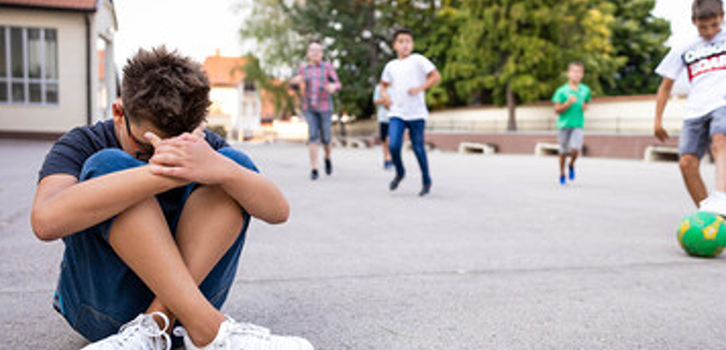IDENTIFYING PEER AGGRESSION AND WHAT TO DO ABOUT IT
If you’ve been around children or adolescents for any length of time, you might not be surprised to f ind that they don’t always get along. You might have wondered, however, whether this fighting is appropriate. Learning how to engage in disagreements with others is a part of life we all have to navigate, so peer conflict is normal and actually can be adaptive. Peer conflict can turn from adaptive to maladaptive when there is an intent to harm another peer, at which point it is usually termed peer aggression. The first thing that might come to mind when you think of aggression is the physical behaviors listed in the table below, such as kicking, hitting, or pushing. However, aggression can also harm someone’s relationship with others by spreading rumors, lies, or secrets. Such acts of relational aggression are perhaps most obviously enacted using social media, which can give the aggressor anonymity.

Whether peer aggression is physical or relational, it can lead to negative consequences (e.g., depression, low academic achievement) for both the aggressor and the victim of aggression (Noret et al., 2018). Thus, it is important to determine ways to prevent peer aggression, which is one of the topics that the Military REACH team recently wrote about in a research report. From this research report, we have provided a few strategies gathered from successful interventions that may mitigate peer aggression. These strategies can be used by families and helping professionals, especially school-based professionals, to address isolated incidents of peer aggression or peer aggression that occurs within group settings.
Improve empathy
Teaching children and adolescents empathy simply means helping them see another peer’s perspective. Children and adolescents who engage in aggressive behaviors tend to have difficulty understanding how their actions affect others and, as a result, may not adequately recognize the harm they are causing. By improving empathy skills, aggressive children and adolescents may not only understand the implications of their actions but also feel more concern for their peers.
Correct negative thinking
Children and adolescents who are aggressive may interpret their peers’ actions in a negative way. For instance, a child may be drawing at their desk and suddenly is bumped into by a classmate, ruining their artwork. An aggressive child will likely think that the classmate bumped into them on purpose and want retribution for ruining their artwork. However, children who are not typically aggressive may simply view this bump as an accident, and although they may feel disappointed that their artwork was ruined, they would not have any desire to harm their peer. Therefore, focusing on such negative thinking patterns will help children and adolescents respond in a more prosocial way that does not result in an aggressive act.
Manage Emotions
One other area that may help improve aggressive behaviors is managing emotions. This basically gets at improving children and adolescents’ ability to identify, accept, and regulate their emotions. Children and adolescents who are aggressive can be overwhelmed by their emotions, may not be able to describe how they feel, or calm themselves down and, as a result, respond aggressively across a variety of situations such as getting accidentally bumped into by another peer. Thus, teaching children and adolescents to manage their emotions may prevent emotional outbursts that give way to aggression.
The strategies mentioned above are meant to be informative. If peer aggression is something you are concerned about, please consider consulting a helping professional, as this is the most effective method to deal with peer aggression.
Read the Military REACH team’s full report on peer aggression, Peer Aggression among Children and Youth: Defining Constructs and Identifying Programming, to access the citations used in this piece and to learn even more on the topic.


Recent Stories